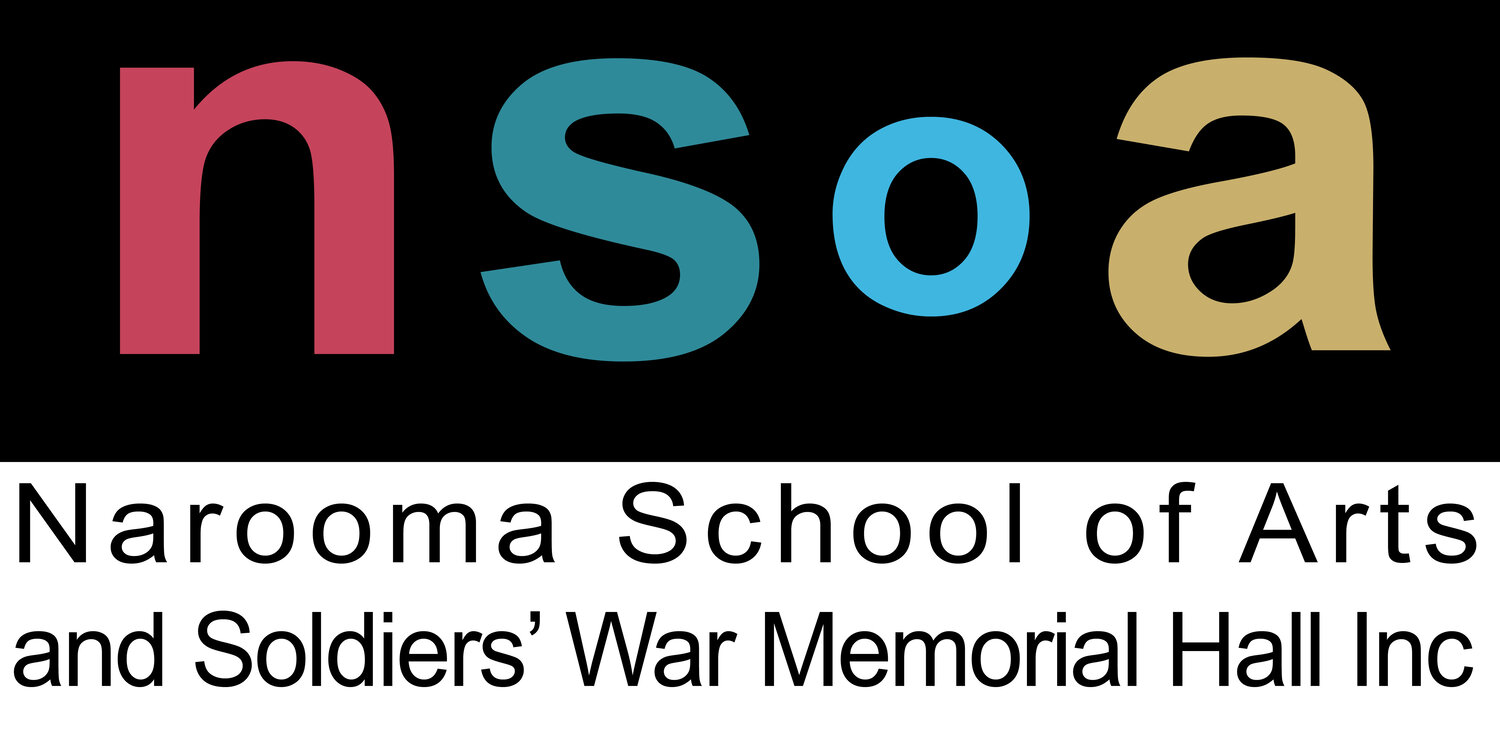
Our Story
Who we are
Narooma School of Arts & Soldiers War Memorial Hall Inc (NSoA) is a not-for-profit community organisation.
Its principal purpose is to hold, manage and enhance School of Arts’ land and facilities on behalf of the community and its members for the cultivation of Literature, Sciences and the Creative and Performing Arts now and for the future. It has done this continuously since 1895.
The community-owned precinct contains the Memorial Hall (Kinema containing two cinemas and an auditorium which can be used as a theatre), the Cottage (Studios) and Narooma Gallery (formerly SoART Gallery).
From its inception the NSoA has been a place that brings the community together. Our community embraces the area from Tuross Head and Bodalla to Bermagui and Cobargo and beyond. We support members of the community to engage in creativity and cultural activities.
Our History
Narooma School of Arts has operated continuously since 1895 when the first land grant was made to the Narooma community for the construction of a School of Arts/Mechanics’ Institute as the town’s first venue where the community could gather together.
That Hall was converted into Narooma’s emergency hospital during the Spanish Influenza Epidemic in late June-July 1919. Part of the original hall still stands today as the newsagency section of Narooma Motors.
Soon after the First World War, the community decided to erect a new much needed larger hall as its memorial to the district’s soldiers, rather than a statue. Narooma Soldiers’ Memorial School of Arts was completed in December 1925 and was Narooma’s first brick building. For many years it was the focus of all community functions and public meetings from dances, wedding receptions and public meetings to plays, musicals, and cinema with a small library.
In 1971 the Memorial Hall became a dedicated cinema leased to an independent cinema operator.
When Council condemned the Memorial Hall in 1995 because of safety concerns, the community was reminded the Hall and its precinct belonged to them and were its responsibility. The community then worked hard, through a reinvigorated School of Arts organisation to fix those problems.
The Hall’s former supper room (town library 1983-2003) was converted to a second cinema with accessible toilet and foyer in 2008.
Since then the community has worked to enhance the precinct to meet current and future community needs, highlights being the staged Hall Project (2013-2018) and its plans for the Narooma Arts & Community Centre (the NACC Project).
Find our more by reading the full timeline compiled by local historian Laurelle Pacey.
The school of arts movement, also known as the mechanics' institute movement, spread through the English-speaking world in the mid-nineteenth century.
Underpinning the movement were the ideas that industry and society would benefit from a scientifically educated artisan class and that a new breed of inventors would arise from this class.
For more than a century in Sydney, local schools of arts and mechanics' institutes contributed significantly to the social, recreational and even educational lives of their communities. Only a small percentage of these institutes survive today, but their legacy can be seen in the city's network of local public libraries, neighbourhood centres and the state system of technical education.
Catherine Freyne, “The School of Arts movement”, dictionaryofsydney.org, 2010












